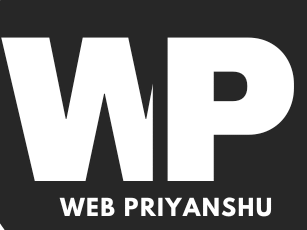INTRODUCTION
In today’s digital age, students have a golden opportunity to earn money online without any investment. Whether you’re in school or college, you can start earning right from your phone or laptop.
This blog covers the top 3 real and trusted ways to earn money online that students across India are already using successfully.
1. Freelancing – Use your skills to Earn Money
Freelancing is a type of self-employment where an individual is paid by clients, often per hour or per project. Freelancers operate in a wide variety of industries, from writing to graphic design. Freelancers are responsible for running their own business and paying their own taxes. 
How Do Freelancers Get Paid?
Freelancers get paid in different ways depending on the type of work they do. For example, many freelance writers get paid per word. A lot of other freelancers are paid on a per-project basis. Some get paid an hourly rate.
As for the actual transfer of funds, freelancers may get paid via platforms like PayPal, or by bank transfer. This typically comes down to how the client prefers to handle payments.
How To Become A Freelancer In 5 Steps
1. Decide What You Want to Do
The first step to becoming a freelancer is figuring out which industry or niche you’re going to freelance in. This is easier if you’re planning on continuing the kind of work you’ve done as an employee, or perhaps you have a hobby you’ve started to monetize and want to build on.
But nothing is stopping you from branching into a different kind of work entirely. Start by looking at your existing skills and previous experience. Which of these can you transfer to a new industry or role?
You also need to think about whether there’s a market for the service you’re offering. Once you’ve narrowed down exactly what it is you want to do, you can then start to build your freelancing business.
2. Learn New Skills If Necessary
Next, identify whether there are any gaps in your skills for the kind of work you want to start doing. You can then find fill those gaps by taking online courses, attending physical classes, or even just reading books and watching YouTube videos.
There are also lots of free and paid online courses available for almost any skill. For example, Skillshare and Udemy are online learning platforms that offer courses in bookkeeping, productivity, marketing, writing, web development, user experience design, yoga – the list goes on!
3. Identify Your Target Market
Once you know what service you’re going to offer, you need to think about who you’re offering it to. This is your target audience, or your clients. Identifying your audience or clients helps you develop your marketing strategy and identify potential avenues to help you build your freelancing business.
This might be easier to do if you’ll be freelancing in an industry you’re familiar with or already have connections in. But if you’re changing careers or moving industries, spend some time on this step to make sure you’re targeting the right market to grow your freelancing career.
4. Set Up Your Business Structure
Once you’ve gone through the planning stages, it’s time to get your freelancing business set up from a legal and tax perspective. The specific requirements for this depend on your location. In the UK, for example, most freelancers register as self-employed with HMRC (although there can be some differences between freelancers and self employed people.
You also need to consider the practical aspects of running your freelancing business, including:
- Registering your business structure
- Applying for a business licence
- Setting up a business email address
- Accounting and record-keeping processes, including invoicing
- Setting up a website
- Building an online portfolio
5. Find Clients
Now all that’s left to do is to go out there and find some freelancing work! There are several ways you can do this, and I’ll outline some of the main ones below. It will take time and effort to find your first clients no matter which route you take, and you need to be prepared for this as a freelancer.
2. Content writing

Content writing is a skill that requires creating written information that is informative, interesting, and helpful to specific audiences in a clear, concise, and engaging manner. Blog posts, articles, website copy, social media posts, and email newsletters are some of its examples.
Types of Content Writers that Companies Hire
1. Technical Writer
A writer who communicates complex technical information in a clear, concise, and user-friendly manner, often for specialized audiences is called a technical writers. They write
- User manuals
- Online help systems
- Screenplays for movies and TV shows
- Radio and podcast scripts
- Video game narratives and dialogue
- Corporate videos and training scripts
- Commercials and advertising scripts
- Training materials
- Technical specifications
- White papers and research reports
2. Ghostwriter
A writer who produces content for someone else who then takes credit as the author is considered a ghostwriter. Basically, you get paid for your write-ups but cannot take the credits. Ghostwriters are usually responsible for writing
- Books (fiction and nonfiction)
- Articles and blog posts
- Speeches and presentations
- Memoirs and biographies
- Social media content
3. Copywriter
A writer who creates persuasive text to promote products, services, or ideas, often to drive sales or engagement are the Copywriters. They create
- Advertisements (print, digital, social media)
- Website content
- Email marketing campaigns
- Product descriptions
- Sales letters and brochures
4. Brand Journalist
Brand journalists are those who create content that aligns with a company’s brand identity and values, often with a storytelling approach. They write:
- Brand stories and feature articles
- Case studies and customer testimonials
- Thought leadership pieces
- Blog posts and social media content
- Internal communications materials
5. Social Media Writer
These types of writers create engaging content specifically for social media platforms, tailored to each platform’s unique format and audience. They are offered to write the following content.
- Social media posts (text, images, videos)
- Engaging captions and text-based content
- Community management responses
- Social media ad copy
6. Email Writer
These writers craft effective emails that capture attention, drive action, and build relationships with subscribers. They write:
- Newsletters and email campaigns
- Welcome emails and onboarding sequences
- Promotional emails and sales offers
Final Thoughts
Content writing lets you to reach out to a wide range of people to spread knowledge and achieve your goals. To do all this effectively, you would require in-depth knowledge of skills and best practices, and this article contains it all. Remember that the path to content writing excellence is a never-ending cycle of learning, experimentation, and improvement but with commitment and passion, you can create meaningful content that leaves a lasting impression. So grab a pen or now a laptop as we are going digital, let your imagination run wild, and start writing! The world is ready to be enchanted by your distinct voice.
3. Affiliate Marketing- Earn without selling your own product
Affiliate marketing is a marketing model in which third-party publishers promote a merchant’s goods or services and receive a percentage of the sales or web traffic generated as a result. It is typically considered a key part of modern digital marketing.
 How do affiliate marketers earn money?
How do affiliate marketers earn money?
Unlike some sales roles, affiliate marketers can earn money even if the person they refer doesn’t purchase a product. Although some affiliate marketing programs pay per lead, you will also find programs that offer to pay per click or per sale.
- Pay-per-click: With pay-per-click affiliate marketing, you can earn a commission every time a user clicks a link that routes them to your affiliate partner’s website.
- Pay-per-lead: Pay-per-lead affiliate marketing allows you to earn a commission every time a user you directed to your affiliate partner completes a lead capture action, such as filling out a contact form or subscribing to a newsletter.
- Pay-per-sale: Pay-per-sale is similar to more traditional sales commission structures, where you earn a percentage or set amount every time a user makes a purchase for your affiliate partner.

